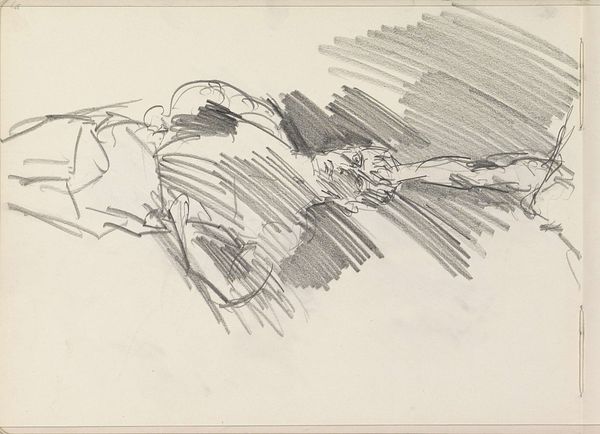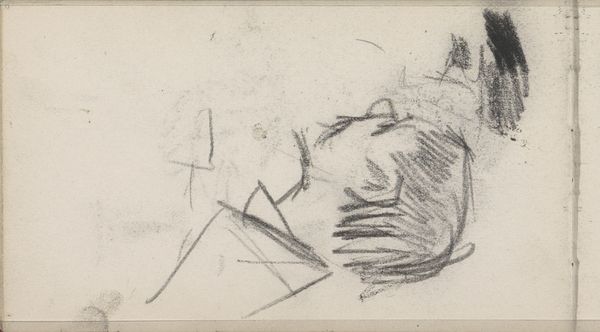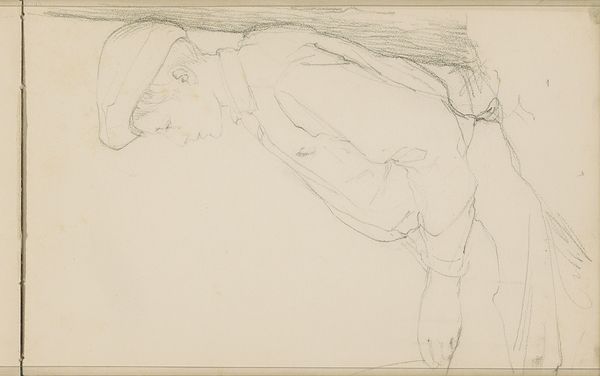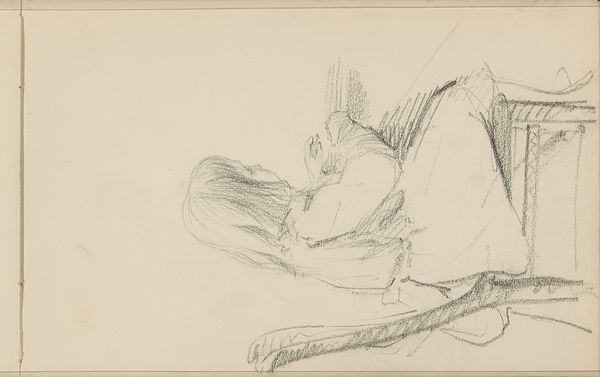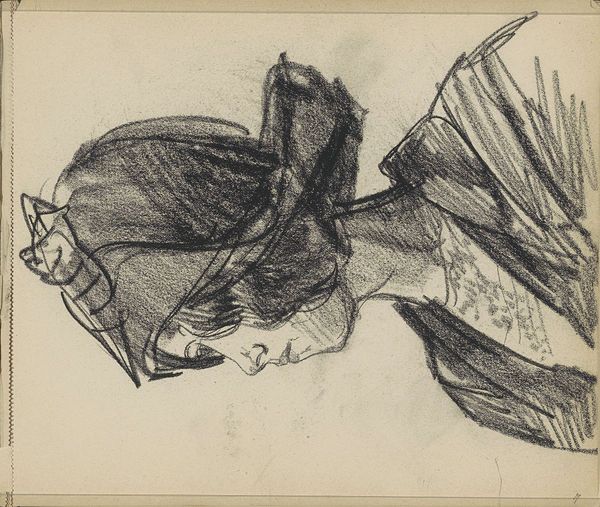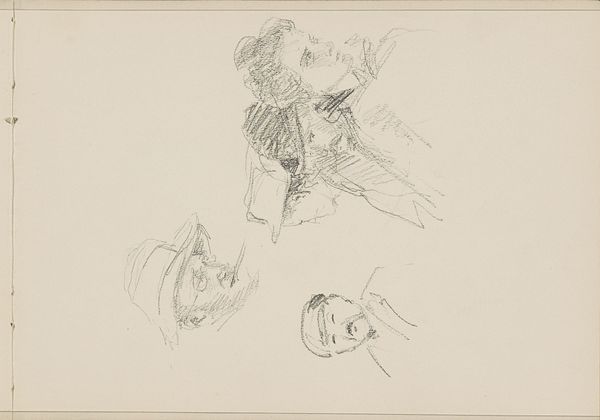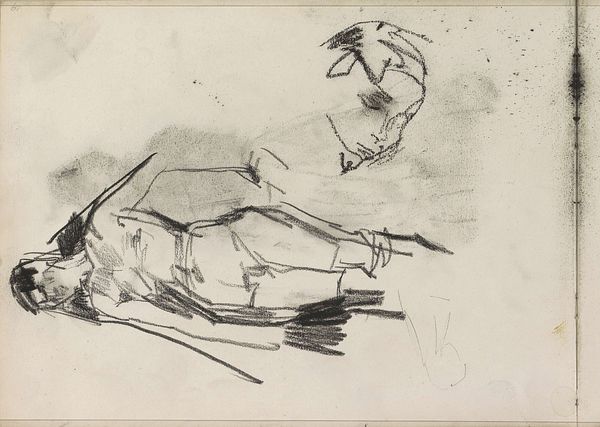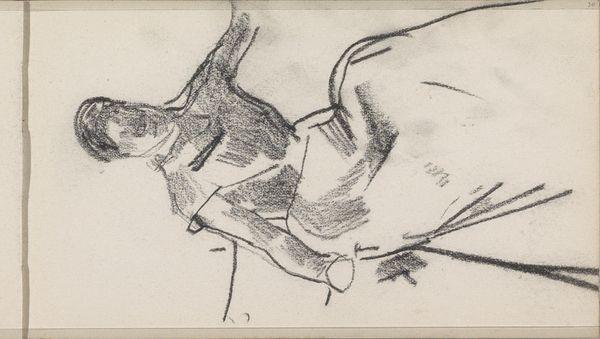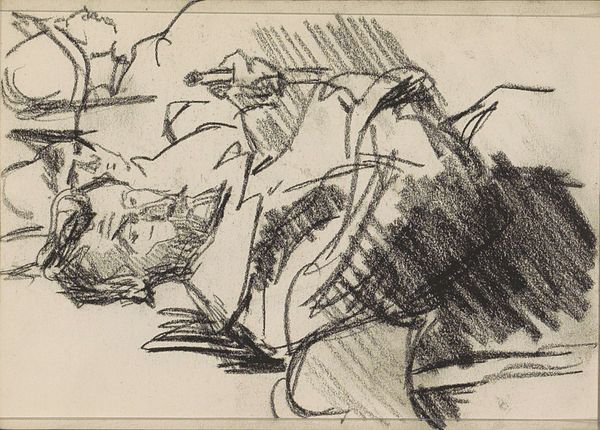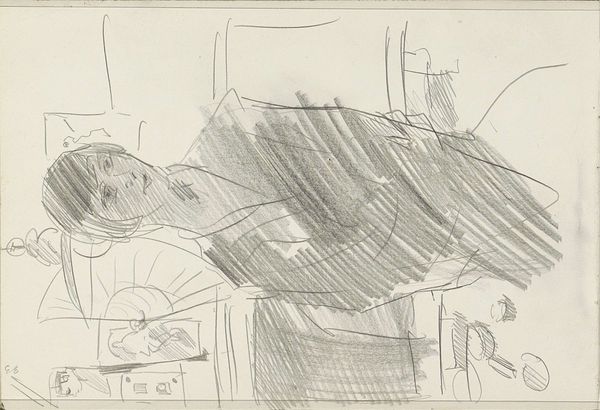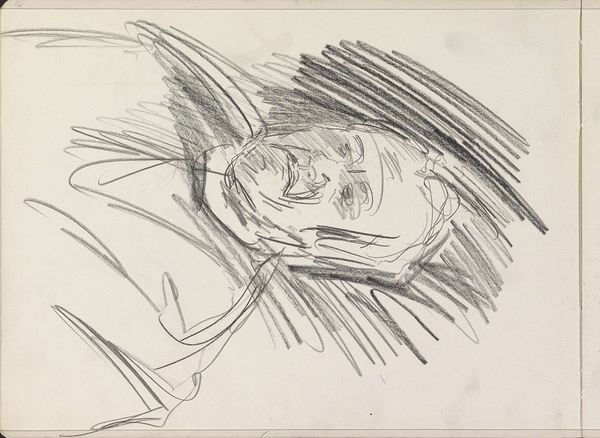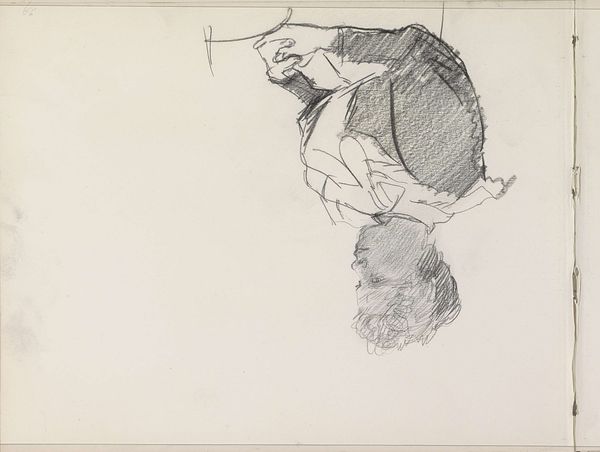
drawing, paper, ink, pencil
#
portrait
#
drawing
#
figuration
#
paper
#
ink
#
pencil
#
modernism
Copyright: Rijks Museum: Open Domain
Editor: Here we have Carel Adolph Lion Cachet's drawing, "Handwerkende Joanna Lion Cachet-Cordes," made between 1935 and 1940 with pencil and ink on paper. It feels like an intimate glimpse into the artist's life, perhaps a study of his wife at work. The sketchiness gives it a very personal feel. What do you see in it? Curator: What strikes me is the seeming simplicity of the subject, yet the complexity of its representation. We see this image, of what appears to be a woman working, but considering its context in the late 1930s, do you think there might be a statement about the role of women in Dutch society or perhaps about domestic labor itself? Editor: That's interesting! I hadn't considered that. I was focusing on the intimacy of the portrait, but the date is significant. Maybe he’s subtly commenting on women's contributions often being unseen or undervalued through this casual representation. Curator: Exactly. And think about the choice of materials – pencil and ink, readily available, almost commonplace. Was the artist trying to make art accessible, portraying an everyday scene with everyday materials? Is that a political act in itself? Or is it something else entirely? Editor: Perhaps it was a choice related to cost. Would that imply a certain intended audience as well? Or even just personal considerations for the artist's living conditions and access to certain material types? Curator: Possibly! And consider also the art world at that time – Modernism was in full swing, and artists were experimenting with different ways of representing reality, or reacting against tradition. How does this drawing, with its clear representational subject, fit into that broader artistic landscape? Was it a conscious choice to engage or disengage with avant-garde trends? Editor: It’s fascinating to consider the many layers within what initially seemed like a simple sketch. I'm now thinking about the social and artistic environment shaping not just what was depicted but how. Thanks! Curator: It shows how understanding historical context and the politics of art can truly deepen our engagement with any artwork, however simple it seems at first glance. It also serves as a great lesson in always questioning what we are viewing, and searching for a wider context beyond personal expression.
Comments
No comments
Be the first to comment and join the conversation on the ultimate creative platform.
